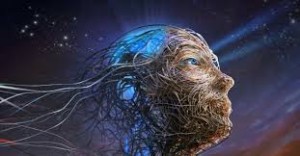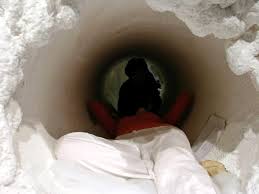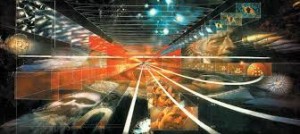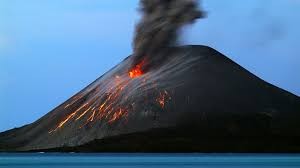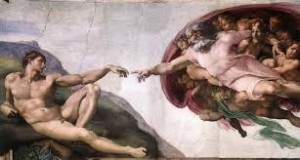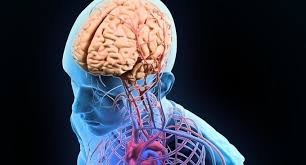Not one idea will be discovered residing in the brain cells. We can try to convey an idea, we can feel its effects, but we cannot see it as we can the chair. Only a fool would say that ideas were non-existent, however, or deny their importance.
We cannot find any given dream location, either, within the brain itself. The solid matter of our world is the result of the play of our senses upon an inner dimension of activity that exists as legitimately, and yet as tantalizing hidden, as an idea or a dream location.
It is easy for us to see that seeds bring forth the fruit of the earth, each [of] their own kind. No seed is identical to any other, yet generally speaking there are species that serve to unite them. We do not mistake an orange for a grape. In the same way ideas or thoughts form general patterns, bringing forth in our world certain kinds of events. In this respect our thoughts and feelings “seed” physical reality, bringing forth materializations.
We operate quite nicely politically, living in villages, townships, countries, states, and so forth, each with certain customs and local ordinances. These in no way affect the land itself. They are designations for practical purposes, and they imply organization of intent or affiliation at one level. They are political patterns, invisible but highly effective. There are, however, far more vigorous invisible mental patterns, into which the thoughts and feelings of humankind are organized — or, naturally, organize themselves.
Each person’s thoughts flow into formation, forming part of the earth’s psychic atmosphere. From that atmosphere flows the natural earthly patterns from which our seasons emerge with all of their variety and effects. We are never victims of natural disasters, though it may seem that we are, for we have our hand in forming them. We are creatively involved in the earth’s cycles. No one can be born for oneself, or die for oneself, and yet no birth or death is really an isolated event, but one in which the entire planet participates. In personal terms, again, each species is concerned not only with survival but with the quality of its life and experience.
In those terms, natural disasters ultimately end up righting a condition that earlier blighted the desired quality of life, so that adjustments were made.
The “victims” choose to participate in those conditions at spiritual, psychological, and biological levels. Many of those who are counted among the fatalities might otherwise die of extended illnesses, for example. At cellular levels such knowledge is available, and in one way or another imparted, often in dreams, to the individual. Consciousness comprehension need not follow, for many people know such things, and pretend not to know them at the same time.
Others have finished with their challenges; they want to die and are looking for an excuse — a face-saving device. However, those who choose such deaths want to die in terms of drama, in the middle of their activities, and are in a strange way filled with the exultant inner knowledge of life’s strength even at the point of death. At the last they identify with the power of nature that seemingly destroyed them.
That identification often brings about in death — but not always — an added acceleration of consciousness, and involves such individuals in a kind of “group death experience,” where all of the victims more or less embark into another level of reality “at the same time.”
Those people were aware just beneath consciousness of the possibilities of such an event long before the disaster occurred, and could until the last moment choose to avoid the encounter. Animals know of weather conditions ahead of time, as old tales say. This perception is a biological part of our heritage also. The body is prepared, though consciously it seems we are ignorant.
There are innumerable relationships that exist between the interior environment of the body and the weather patterns. The ancient feelings of identification with storms are quite valid, and in that respect the “realism” of feelings is far superior to the realism of logic. When a person feels a part of a storm, those feelings speak a literal truth. Logic deals with exterior conditions, with cause-and-effect relationships. Intuitions deal with immediate experience of the most intimate nature, with subjective motions and activities that in our terms move far quicker than the speed of light, and with simultaneous events that our cause-and-effect level is far too slow to perceive.
In that regard also, the activities of the inner environment are too fast for us to follow intellectually. Our intuitions, however, can give us clues to such behavior. A country is responsible for its own droughts, earthquakes, floods, hurricanes — and for its own harvests and rich display of products, its industry and cultural achievements, and each of these elements is related to each other one.
If the quality of life that is considered spiritually and biologically necessary fails, then adjustments occur. A political problem might be altered by a natural disaster if political means fail. On the other hand, the rousing creative energies of the people will emerge.
Excellence will show itself through the arts, cultural creatively, technological or sociological accomplishments. The species tries to fulfill its great capacities. Each physical body in its own way is like the world. It has its own defenses and abilities, and each portion of it strives for a quality of existence that will bring to the smallest parts of it the spiritual and biological fulfillment of its own nature.
The self out grows the flesh.












